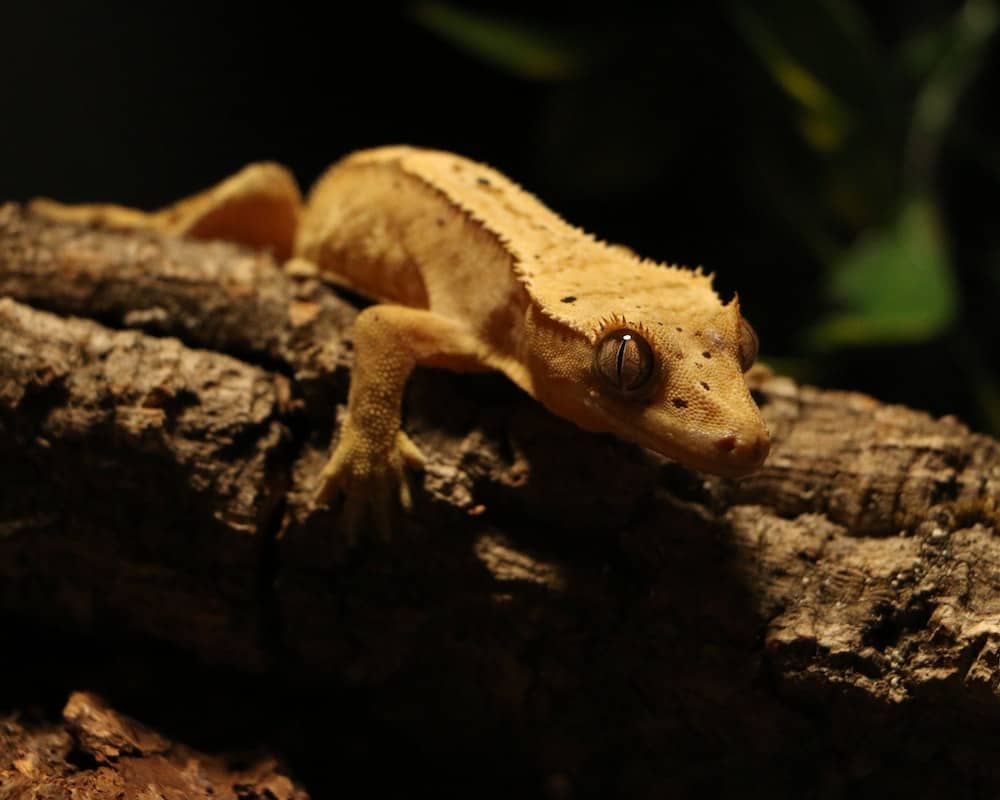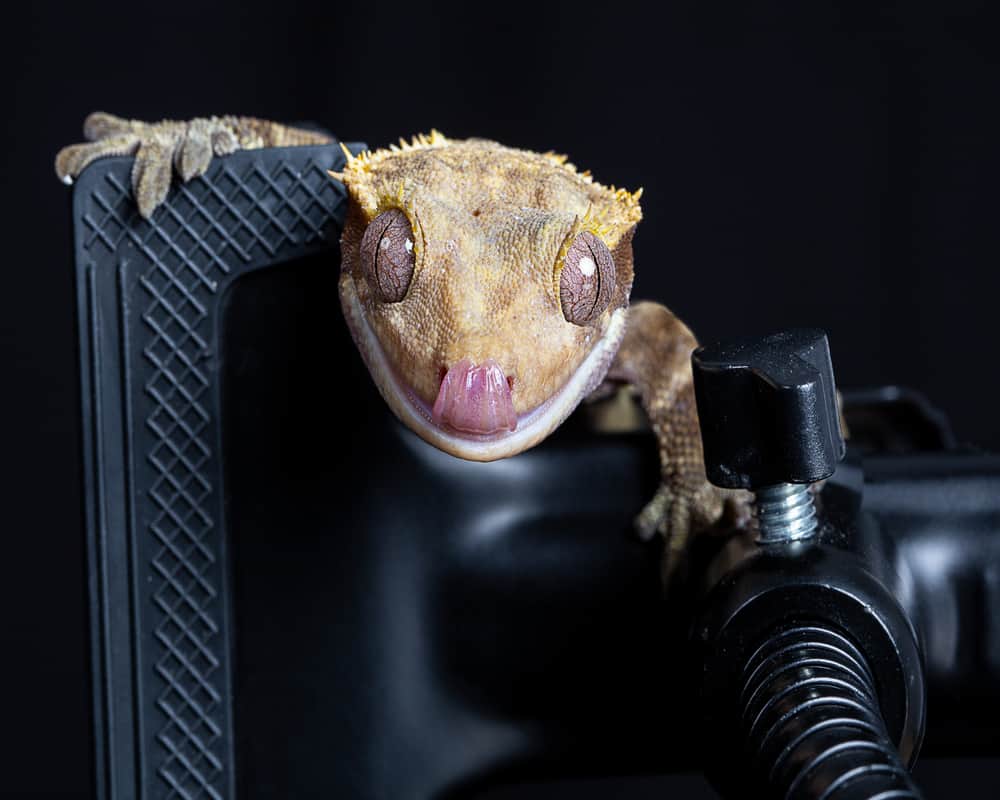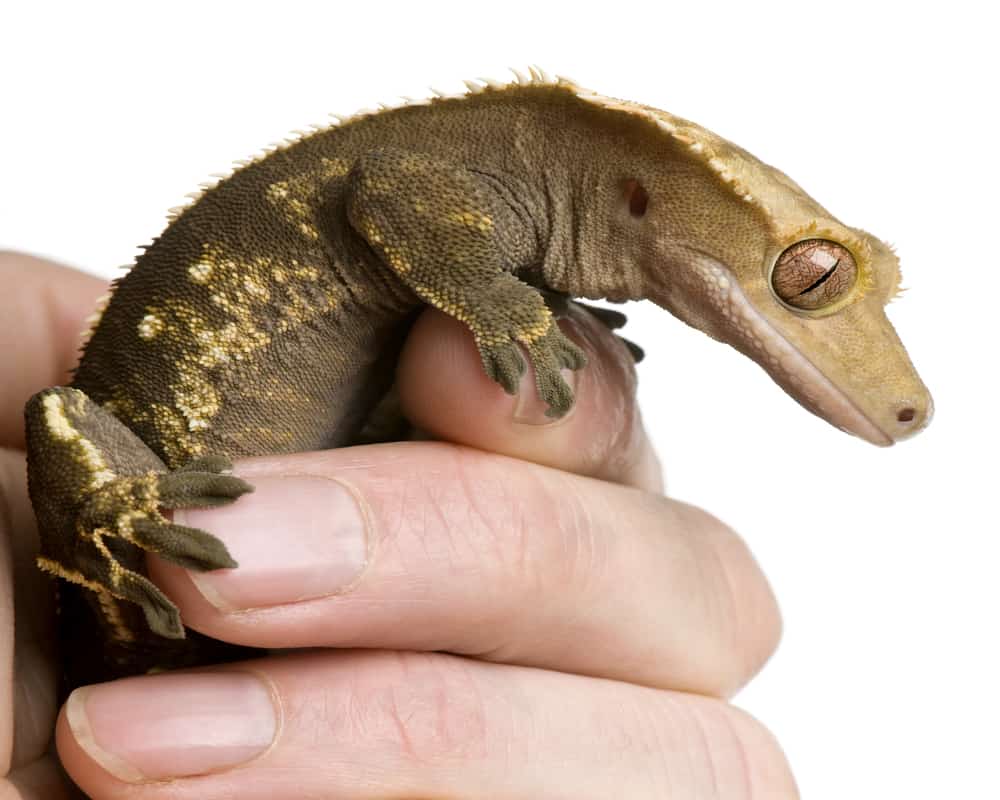Yes, crested geckos can swim. However, they only swim when they sense a threat to their lives. Crested geckos swim only to respond to any danger they might feel. They do not like to swim of their own accord. Rarely will they swim in a pool without threat.
Crested Geckos Reptilian Instinct to Swim for Survival
Crested geckos, also known as eyelash geckos, belong to Reptilia. Like most reptiles, they have the instinct to swim, but only when they have no other option.
They will tend to swim in the wild when facing imminent danger to their lives.
They will try to evade their predators or potential threats even by swimming through a lake or pond.
How Does a Crested Gecko Swim Safely?
They are capable of swimming safely. All reptiles, in general, have a natural tendency to swim.
These reptiles can swim by shifting their body sideways. They may or may not swim linearly.
They will also use all of their limbs to paddle through the water. They may also use their tails to propel themselves ahead in the water.
Do They like Water?
These reptiles are mostly arboreal creatures. It means they are more accustomed to climbing trees and living on trees. They are used to dry and hot climates.
They only require hydration and regular humidity levels for shedding purposes. Occasionally, you might spot your pet rolling lightly in a small, shallow water dish.
Do They Get Wet?
As Crested geckos are arboreal, they need a vertical vivarium or terrarium. Like most reptiles and lizards, these reptiles shed their skin. The juvenile crested geckos shed their skin a lot.
Because they need humidity and proper hydration, they get wet. The correct humidity levels help them in shedding their skin easily.
A 50 to 70 percent humidity level is required for optimum humid conditions in their terrarium or enclosure. However, too much humidity can cause them a considerable amount of discomfort and may also cause infections.
Can They Drown?
Even though they can swim, they can drown. These reptiles will mostly stay on the surface and paddle till they reach a safe, solid surface.
They will avoid diving inside the water. These reptiles do not have gills and, thus, cannot breathe underwater.
They can, however, hold their breath in extreme cases for very little time. However, if stretched too long, there is the danger that they can drown and die.
Why Shouldn’t You Force Them to Swim?
For these reptiles, swimming is a survival mechanism. They swim only under the influence of threat or harm to their lives. Therefore, swimming can be an extremely stressful activity for them.
If the terrarium or pet enclosure has water in it, and the pet is forced to swim in it all the time, it will be unnecessarily stressful. The stress will also eventually affect the overall health of your pet.
If you unduly force them to swim and expose them to environments where it has to stay in water for a longer time, your pet may have trust issues with you.
Therefore, forcing your pet is best avoided for the betterment of your pet and your relationship with them.
How to Bathe Your Crested Gecko?
It is not necessary to bathe them often. These reptiles have a natural mechanism of cleaning themselves by shedding their skin.
Adult geckos shed their skin once a month. Juveniles will shed more often.
Misting the enclosure daily at night and providing clean water in a shallow dish will ensure your pet sheds appropriately. However, you might have to bathe or clean it in rare situations.
Do not soak or immerse your pet in water, as there are chances that it may drown. These reptiles should not be bathed conventionally by engaging them in water. Instead, use a perforated container.
Put a moist paper towel in warm water and place it on the container. Gently place them on the towel. This will give them exposure to humidity without giving them the stress levels of making them swim compulsively.
In this manner, the hard-to-slough-off skin will come off. If you have any concerns about bathing them, it is best to consult a veterinary doctor for instructions.
FAQS
How Should I Design the Enclosure?
These animals primarily reside on trees in the wild. They need more extensive and spacious habitats. Therefore, investing in a large and vertical terrarium is recommended. They also need a lot of humidity in their enclosure. Make sure you invest in a digital hygrometer to monitor the humidity levels of the pet enclosure.
Along with this, make sure the pet enclosure has a layer of soil at the bottom of the enclosure.
Do not fill the tank with water. This will expose them to swimming unnaturally and thereby induce stress in them. Just place a shallow plate of clean water for your pet’s hydration.
Place real plants or fake plants to imitate a natural habitat. Pet shops generally have options for plants that are suitable for these animals.
Also, their enclosures must be maintained between 75- 82 degrees Fahrenheit during the day and between 68 – 75 degrees at night. Investing in a low-wattage incandescent bulb or ceramic heat emitter and a thermometer is recommended. These reptiles are nocturnal by nature. So they do not need UV light in their enclosures. However, installing a UV light in the enclosure can improve your pet’s overall health.
What Kind Of Water Should I Use to Hydrate These Reptiles?
It is advisable to use filtered water to hydrate your crested gecko. Most animals are comfortable with tap water containing chemicals like chlorine and fluorine. But, if you want to be safer, offer filtered water to them.
Do not offer distilled water, as it lacks vital nutrients and vitamins your pet requires. Also, avoid garden hose water as it may contain harmful chemicals that can affect their health.
Can I Add a Waterfall to the Enclosure?
It is advisable to avoid installing any waterfall system in the pet enclosure. Waterfalls can unnecessarily increase the humidity levels in the pet’s enclosures. Instead, opt for setting up plants. Plants are more like the natural habitat of crested geckos.
How Often Should I Mist the Enclosure?
Daily misting of the pet enclosure is advisable. Wipe the walls of the enclosure after 5-7 minutes post-misting. The humidity levels should be maintained between 50 to 70 percent. The substrate or soil ensures moisture in the terrarium or vivarium.
A digital hygrometer will help you to maintain the optimum humidity levels in the tank. There is no need to install a misting system in the pet enclosure. Excess humidity levels can cause bacterial and fungal infections.
How Often Should I Clean the Tank?
Cleaning the tank thoroughly once a month is advisable. Before cleaning the tank, ensure you have a backup place for your crested gecko. Spot cleaning should be done as and when necessary. It is essential to clean out the tank for extra leftover food. Also, clean the shallow water dish regularly. Sometimes they can use the dish for defecation. At such times, replacing the dish with a clean, shallow dish is essential. You can check out this excellent tank cleaning guide we found.
Has your Crested Gecko ever had trouble climbing? You can check out this article that provides 14 different signs why your gecko might have trouble climbing.




